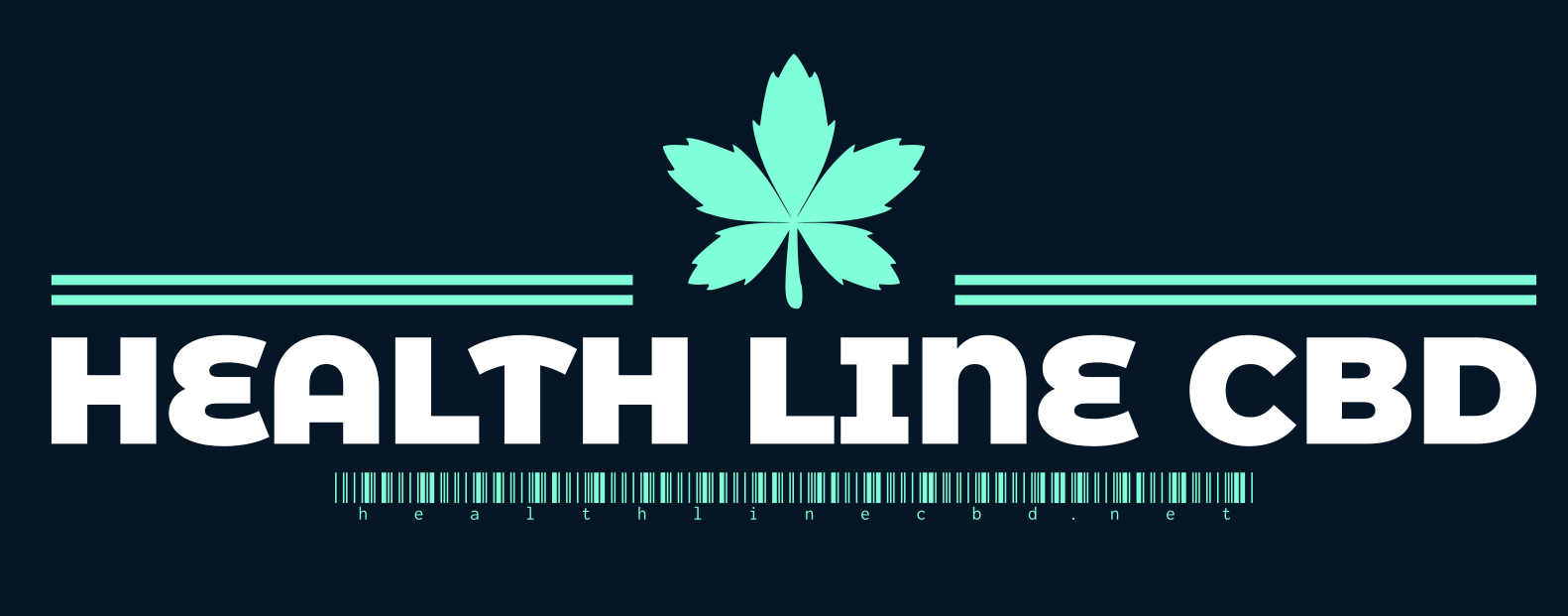Historical Perspectives on Gender and Sexuality
Throughout history, societies have grappled with understanding the complexities of gender and sexuality. From ancient civilizations to the modern era, perspectives on these concepts have evolved significantly, shaped by cultural norms, religious beliefs, and evolving social structures. Exploring these historical shifts provides valuable insights into how our contemporary understanding of gender identity and sexuality has been formed.
Evolution of Concepts
In many ancient cultures, gender roles were often rigidly defined and linked to specific social expectations. Concepts of sexuality tended to focus on procreation and the reinforcement of societal structures. For example, ancient Greek society had a complex system of gender roles with distinct masculine and feminine ideals, and sexual relationships were often viewed within the context of family and societal obligations.
During the Middle Ages in Europe, religious doctrines heavily influenced perspectives on gender and sexuality. The Catholic Church emphasized the importance of chastity outside of marriage and placed strict limitations on female sexuality. Homosexuality was often condemned as sinful and punishable by law.
The Enlightenment period brought about a shift towards more individualistic and secular views. Thinkers began to question traditional notions of gender roles and explore ideas about sexual liberation. However, societal norms still largely adhered to binary understandings of gender and sexuality.
The 20th century witnessed significant advancements in the understanding of gender and sexuality. The rise of feminism challenged traditional gender roles and advocated for women’s rights. The gay rights movement gained momentum, pushing for legal and social recognition of same-sex relationships.
In recent decades, there has been increasing acceptance of gender fluidity and diverse sexual orientations. Concepts like transgender identities and non-binary genders have entered mainstream discourse, reflecting a growing understanding that gender is a spectrum rather than a binary.
Societal Norms and Expectations
Throughout history, societies have grappled with understanding the complexities of gender and sexuality. From ancient civilizations to the modern era, perspectives on these concepts have evolved significantly, shaped by cultural norms, religious beliefs, and evolving social structures. Exploring these historical shifts provides valuable insights into how our contemporary understanding of gender identity and sexuality has been formed.
In many ancient cultures, gender roles were often rigidly defined and linked to specific social expectations. Concepts of sexuality tended to focus on procreation and the reinforcement of societal structures. For example, ancient Greek society had a complex system of gender roles with distinct masculine and feminine ideals, and sexual relationships were often viewed within the context of family and societal obligations.
During the Middle Ages in Europe, religious doctrines heavily influenced perspectives on gender and sexuality. The Catholic Church emphasized the importance of chastity outside of marriage and placed strict limitations on female sexuality. Homosexuality was often condemned as sinful and punishable by law.
The Enlightenment period brought about a shift towards more individualistic and secular views. Thinkers began to question traditional notions of gender roles and explore ideas about sexual liberation. However, societal norms still largely adhered to binary understandings of gender and sexuality.

The 20th century witnessed significant advancements in the understanding of gender and sexuality. The rise of feminism challenged traditional gender roles and advocated for women’s rights. The gay rights movement gained momentum, pushing for legal and social recognition of same-sex relationships.
In recent decades, there has been increasing acceptance of gender fluidity and diverse sexual orientations. Concepts like transgender identities and non-binary genders have entered mainstream discourse, reflecting a growing understanding that gender is a spectrum rather than a binary.
The Complexity of Gender Identity
Gender identity is a complex and multifaceted aspect of human experience. It encompasses an individual’s deeply held sense of their own gender, which may or may not align with the sex they were assigned at birth. Understanding this concept requires acknowledging its fluidity and the diversity of ways in which individuals express and experience their gender.
Beyond the Binary: Exploring Non-Binary Identities
Gender identity is a complex and multifaceted aspect of human experience. It encompasses an individual’s deeply held sense of their own gender, which may or may not align with the sex they were assigned at birth. Understanding this concept requires acknowledging its fluidity and the diversity of ways in which individuals express and experience their gender.
Non-binary identities represent a significant departure from traditional binary understandings of gender. These identities encompass a wide range of experiences and expressions, defying rigid categorization into male or female.
- Individuals who identify as non-binary may feel that their gender identity falls outside the boundaries of man and woman.
- Some may experience their gender as fluctuating or evolving over time.
- Others may identify with a combination of genders or find resonance with specific gender identities that exist beyond the traditional binary.
Exploring the intersection between gender identity and sexuality further illuminates the complexities of human experience. Sexual orientation, an individual’s enduring pattern of romantic, emotional, and/or sexual attraction to others, intersects with gender identity in diverse and nuanced ways.
Gender Expression and Internal Sense of Self
Gender expression is the external manifestation of one’s gender identity. It encompasses the way individuals present themselves through clothing, hairstyle, mannerisms, and other outward expressions. Gender expression can align with societal norms or challenge them, reflecting an individual’s unique sense of self.
The internal sense of self, also known as one’s core gender identity, is a deeply personal and fundamental aspect of who a person is. It refers to an individual’s subjective experience and understanding of their own gender. This internal sense may or may not align with the sex they were assigned at birth.
It is important to recognize that these concepts—gender identity, gender expression, and internal sense of self—are distinct but interconnected. While gender identity is an internal feeling, gender expression is an outward reflection of that identity. The relationship between these concepts can vary greatly from person to person.
The Impact of Socialization and Cultural Influences
Understanding the complexities of gender identity requires acknowledging its fluidity and the diversity of human experiences. Gender is not a fixed or binary concept; it exists on a spectrum with individuals expressing their gender in various ways.

Socialization plays a crucial role in shaping our understanding of gender. From childhood, we are exposed to societal norms and expectations regarding gender roles, behavior, and expression. These messages, often conveyed through family, peers, media, and cultural institutions, can influence how individuals perceive themselves and others.
Cultural influences also significantly impact gender identity. Different cultures have diverse perspectives on gender, with varying interpretations of what constitutes masculinity, femininity, and other gender identities. These cultural norms can shape individual experiences and expressions of gender.
It is essential to recognize that individuals may experience a disconnect between their internal sense of gender and the gender they were assigned at birth. This dissonance can lead to feelings of incongruence and distress. For some, transitioning to align their outward expression with their internal identity can be a transformative and affirming process.
Ultimately, understanding gender identity requires empathy, respect for individual experiences, and a willingness to challenge rigid binary notions. By fostering inclusivity and acceptance, we create a more equitable and supportive environment for all individuals to express their authentic selves.
Sexuality and its Spectrum
Sexuality is a complex and multifaceted aspect of human experience that encompasses a person’s sexual orientation, attraction, and behaviors. It encompasses a vast spectrum of identities and expressions, ranging from heterosexual to homosexual, bisexual, pansexual, and beyond. Understanding this spectrum requires recognizing the diversity of individual experiences and rejecting narrow or limiting definitions.
Understanding Sexual Orientation
Sexuality is a complex and multifaceted aspect of human experience that encompasses a person’s sexual orientation, attraction, and behaviors. It encompasses a vast spectrum of identities and expressions, ranging from heterosexual to homosexual, bisexual, pansexual, and beyond. Understanding this spectrum requires recognizing the diversity of individual experiences and rejecting narrow or limiting definitions.
Sexual orientation refers to an enduring pattern of romantic or sexual attraction to others. It is a fundamental aspect of a person’s identity and influences their relationships and experiences.
Heterosexual individuals are attracted to people of the opposite sex, while homosexual individuals are attracted to people of the same sex. Bisexual individuals are attracted to two or more sexes, while pansexual individuals are attracted to people regardless of their gender identity or expression.
Asexuality is a sexual orientation characterized by a lack of sexual attraction to others. Asexual individuals may experience romantic attraction but not sexual attraction.
It’s important to remember that sexuality is personal and unique to each individual. Labels can be helpful for some people in defining their experiences, but they are not essential for everyone. What matters most is respecting individuals’ self-identified sexual orientations and creating a safe and inclusive environment where all people feel comfortable expressing themselves authentically.
Fluidity and Change in Sexual Identity
Sexuality encompasses an individual’s sexual orientation, attraction patterns, and behaviors. It exists on a spectrum rather than fitting into rigid categories.
Sexual orientation refers to a person’s enduring pattern of romantic or sexual attraction to others. It can encompass a variety of identities, including heterosexual, homosexual, bisexual, pansexual, asexual, and many more.
Understanding this spectrum requires acknowledging the diversity of human experience and rejecting limiting definitions. It’s essential to respect individuals’ self-identified sexual orientations and create an inclusive environment where everyone feels comfortable expressing themselves authentically.
Sexual fluidity refers to the capacity for a person’s sexual orientation to evolve or change over time. This can involve shifts in attractions, preferences, or identifications throughout an individual’s lifespan.

Several factors can contribute to sexual fluidity, including personal growth, life experiences, cultural influences, and evolving understandings of oneself. It is important to approach discussions about sexual fluidity with sensitivity and respect for individual journeys.
Gender identity intersects significantly with sexuality. An individual’s gender identity (their internal sense of being male, female, or something else) can influence their sexual orientation and experiences.
For example, transgender individuals may experience sexual attractions that align with their gender identity rather than the sex they were assigned at birth.
It’s crucial to recognize these complexities and avoid making assumptions about someone’s sexuality based on their gender identity or expression.
Intersectionality: Overlapping Identities
Sexuality is a complex and multifaceted aspect of human experience that encompasses a person’s sexual orientation, attraction, and behaviors. It encompasses a vast spectrum of identities and expressions, ranging from heterosexual to homosexual, bisexual, pansexual, and beyond. Understanding this spectrum requires recognizing the diversity of individual experiences and rejecting narrow or limiting definitions.
Sexual orientation refers to an enduring pattern of romantic or sexual attraction to others. It is a fundamental aspect of a person’s identity and influences their relationships and experiences.
Heterosexual individuals are attracted to people of the opposite sex, while homosexual individuals are attracted to people of the same sex. Bisexual individuals are attracted to two or more sexes, while pansexual individuals are attracted to people regardless of their gender identity or expression.
Asexuality is a sexual orientation characterized by a lack of sexual attraction to others. Asexual individuals may experience romantic attraction but not sexual attraction.
Intersectionality acknowledges that individuals hold multiple, overlapping identities—race, ethnicity, gender, sexual orientation, religion, socioeconomic status—that intersect and influence their experiences. Recognizing these intersections is crucial for understanding how power dynamics and social structures shape individual lives.
For example, a lesbian woman of color may face unique challenges and experiences compared to a white, heterosexual woman. Their identities intersect, shaping their interactions with society, access to resources, and overall well-being.
Understanding intersectionality helps us move beyond simplistic categorizations and recognize the complexity of human lives. It promotes empathy, challenges prejudice, and advocates for social justice by addressing the interconnected nature of oppression and inequality.
Challenges Faced by Gender Non-Conforming and LGBTQ+ Individuals
Gender non-conforming and LGBTQ+ individuals often face numerous challenges in their daily lives. These can range from discrimination and prejudice to lack of access to healthcare and legal protections. Social stigma, bullying, and harassment are also common experiences, contributing to mental health issues and feelings of isolation.
Discrimination and Prejudice
Gender non-conforming and LGBTQ+ individuals face a multitude of challenges rooted in societal prejudices and a lack of understanding. Discrimination is pervasive, manifesting in various forms, from subtle microaggressions to overt hostility. Employment discrimination can lead to limited opportunities and economic hardship. Access to healthcare may be restricted due to biases held by medical professionals or a lack of culturally competent care.
Legal protections are often inadequate, leaving individuals vulnerable to violence, harassment, and denial of basic rights. In many parts of the world, same-sex relationships are criminalized, putting LGBTQ+ individuals at risk of arrest, imprisonment, or even death.
Social stigma can be particularly damaging, leading to feelings of shame, isolation, and self-doubt. It can create an environment where individuals feel unsafe expressing their true selves, hindering their personal and professional growth. Bullying and harassment, both online and offline, are sadly common experiences for gender non-conforming and LGBTQ+ youth, contributing to mental health problems like depression and anxiety.
Mental Health Issues and Support Systems
Gender non-conforming and LGBTQ+ individuals often face significant challenges that impact their mental well-being. These challenges stem from societal stigma, discrimination, and a lack of understanding or acceptance.
Experiences of prejudice can lead to feelings of isolation, worthlessness, and fear. Constant exposure to negativity and hostility can take a toll on mental health, increasing the risk of depression, anxiety, substance abuse, and suicidal thoughts.
Lack of access to supportive environments and resources further exacerbates these issues. Many individuals struggle to find safe spaces where they can express themselves authentically and connect with others who share their experiences.
It is crucial to build supportive systems and promote inclusivity to protect the mental health of gender non-conforming and LGBTQ+ individuals. This involves:
* **Education and Awareness:** Challenging stereotypes, promoting understanding of diverse identities, and fostering empathy are essential for creating a more accepting society.
* **Legal Protections:** Ensuring equal rights and protections under the law is vital for safeguarding against discrimination and violence.
* **Access to Healthcare:** Providing culturally competent and affirming healthcare services that address the unique needs of this community is crucial.
* **Safe Spaces and Support Groups:** Creating supportive environments where individuals can connect with others, share experiences, and receive emotional support is essential.
By addressing these challenges and fostering inclusivity, we can create a world where gender non-conforming and LGBTQ+ individuals feel safe, valued, and empowered to live their lives authentically.
Advocacy and Activism for Equality
Gender non-conforming and LGBTQ+ individuals face numerous hurdles in achieving equality. They contend with discrimination in various spheres, including employment, housing, healthcare, and education. Legal protections are often inadequate, leaving them vulnerable to violence, harassment, and denial of basic rights.
Advocacy and activism have been instrumental in advancing the rights of gender non-conforming and LGBTQ+ individuals. Organizations like Human Rights Campaign, GLAAD, and the National Center for Transgender Equality work tirelessly to promote equality, challenge discrimination, and advocate for policy changes.
Grassroots movements, led by community members themselves, have played a crucial role in raising awareness, building solidarity, and demanding change.
One significant achievement has been the legalization of same-sex marriage in many countries, a landmark victory that signifies progress towards equality.
While significant strides have been made, continued advocacy is essential to overcome remaining obstacles. This includes:
- Addressing Transphobia: Combatting the unique challenges faced by transgender individuals, including discrimination in healthcare, employment, and access to public facilities.
- Protecting LGBTQ+ Youth: Creating safe and inclusive schools where all students feel accepted and supported.
- Ensuring Equal Access to Healthcare: Guaranteeing that all individuals have access to affordable, culturally competent healthcare, including gender-affirming care for transgender people.
- Combating Discrimination: Enacting stronger legal protections against discrimination based on sexual orientation and gender identity in all areas of life.
The fight for equality is ongoing, requiring sustained effort from individuals, organizations, and governments. By working together, we can create a more just and equitable society where gender non-conforming and LGBTQ+ individuals are free to live their lives authentically and without fear.
Finding Support and Community
Finding support and community can be crucial for gender non-conforming and LGBTQ+ individuals. These communities provide safe spaces where individuals can connect with others who share similar experiences, offering a sense of belonging and validation.
Support groups and online forums allow individuals to find solace in shared stories, offer advice, and receive emotional support from those who understand their unique challenges.
Community centers dedicated to LGBTQ+ individuals often offer resources, workshops, social events, and advocacy opportunities, fostering a sense of empowerment and collective action.
LGBTQ+ Organizations and Resources
Finding support and community can be crucial for gender non-conforming and LGBTQ+ individuals.
These communities provide safe spaces where individuals can connect with others who share similar experiences, offering a sense of belonging and validation.
Support groups and online forums allow individuals to find solace in shared stories, offer advice, and receive emotional support from those who understand their unique challenges.
Community centers dedicated to LGBTQ+ individuals often offer resources, workshops, social events, and advocacy opportunities, fostering a sense of empowerment and collective action.
Here are some ways to find support:
- Local LGBTQ+ Organizations:** Many cities and towns have organizations that provide services, support groups, and social events for the LGBTQ+ community.
- Online Forums and Groups: Numerous online platforms connect individuals with shared experiences. These spaces offer a sense of anonymity and allow people to connect with others from around the world.
- Hotlines and helplines:** Crisis hotlines offer confidential support for those experiencing distress or suicidal thoughts.
Remember that seeking support is a sign of strength, and there are people who care and want to help.
Finding information and resources about gender identity and sexuality can be empowering and helpful. Here are some organizations that provide valuable information, support, and advocacy:
- The Trevor Project:** Offers crisis intervention and suicide prevention services for LGBTQ+ youth.
- GLAAD:** Works to promote understanding and acceptance of LGBTQ+ people through media representation.
- Human Rights Campaign (HRC):** Advocates for LGBTQ+ equality through policy change, education, and public awareness campaigns.
- PFLAG:
Provides support, education, and advocacy for parents, families, and friends of LGBTQ+ individuals.
These organizations are valuable resources for finding information, connecting with others, and advocating for a more inclusive world.
Building Inclusive Spaces
Finding support and community is vital for the well-being of gender non-conforming and LGBTQ+ individuals. These communities offer safe spaces where individuals can connect with others who understand their experiences, providing a sense of belonging, validation, and acceptance.
Support groups and online forums allow individuals to share their stories, offer advice, and receive emotional support from those who have walked similar paths. Community centers dedicated to LGBTQ+ individuals often provide resources, workshops, social events, and advocacy opportunities, fostering a sense of empowerment and collective action.
Building inclusive spaces is essential for creating an environment where everyone feels welcome, respected, and valued. This involves:
* **Education and Awareness:** Promoting understanding of gender identity and sexual orientation through education and awareness campaigns can challenge stereotypes and foster empathy.
* **Inclusive Language:** Using respectful and inclusive language that acknowledges the diversity of gender identities and expressions is crucial.
* **Safe Spaces:** Creating physical and online spaces where individuals feel safe to express themselves authentically without fear of judgment or discrimination is essential.
* **Representation:** Ensuring representation of gender non-conforming and LGBTQ+ people in media, literature, and other forms of communication helps normalize diversity and challenges harmful stereotypes.
By actively working towards these goals, we can create a more inclusive and equitable society where everyone feels empowered to be their authentic selves.
The Importance of Self-Acceptance and Advocacy
Finding support and community can be incredibly important for gender non-conforming and LGBTQ+ individuals. These communities offer safe spaces where people can connect with others who share similar experiences, providing a sense of belonging and validation that can be crucial for well-being. Support groups and online forums allow individuals to find solace in shared stories, offer advice, and receive emotional support from those who understand their unique challenges. Community centers dedicated to LGBTQ+ individuals often provide resources, workshops, social events, and advocacy opportunities, fostering a sense of empowerment and collective action.
Self-acceptance is also paramount on the journey towards well-being. Embracing one’s gender identity and sexual orientation, regardless of societal pressures or expectations, is essential for living an authentic and fulfilling life. This can involve:
* **Exploration and Discovery:** Taking time to explore one’s feelings, thoughts, and experiences related to gender identity and sexuality without judgment.
* **Education and Information:** Learning about different identities and expressions can provide valuable insights and help individuals understand themselves better.
* **Affirming Language:** Using language that reflects one’s true identity is a powerful step towards self-acceptance.
Advocating for oneself and one’s rights is equally important. This can involve:
* **Speaking Up Against Discrimination:** Challenging prejudice and intolerance whenever encountered, both in personal interactions and in broader society.
* **Supporting Organizations:** Participating in advocacy efforts to promote equality and protect the rights of gender non-conforming and LGBTQ+ individuals.
* **Voting and Political Engagement:** Using one’s voice to support policies that promote inclusion and justice for all.
Remember, you are not alone on this journey. There are resources, communities, and allies who stand in support. Embrace your identity, advocate for yourself, and know that you deserve respect, dignity, and equal opportunities.
plus size sex doll
Discover this entire post
View the entire editorial
- Forehead Frown Lines Treatment Near Merrow, Surrey - September 25, 2025
- Exosome Therapy For Skin Rejuvenation Near East Sheen, Surrey - September 23, 2025
- Dimpled Chin Treatment Near Peper Harow, Surrey - September 21, 2025

